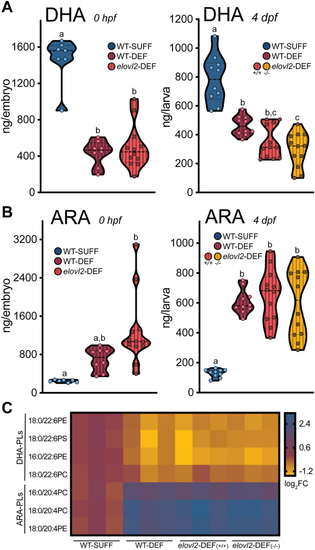Fig.5
|
Maternal dietary DHA restriction and biosynthesis disruption depletes offspring DHA and increases ARA. Adult wild-type and |
| Fish: | |
|---|---|
| Condition: | |
| Observed In: | |
| Stage Range: | 1-cell to Day 4 |

